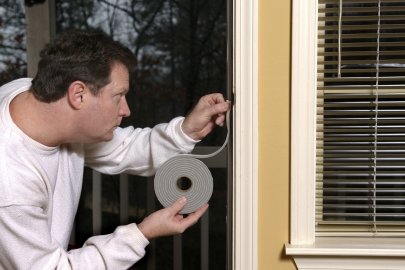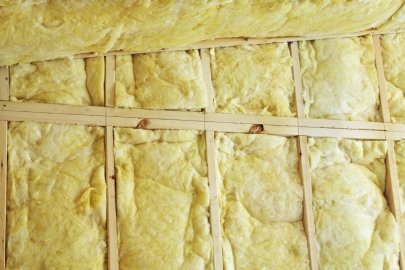Minimizing air movement in and out of a house is key to building an energy-efficient home. Controlling air leakage is also critical to moisture control. Before developing an air sealing strategy, you should also consider the interactions among air sealing materials and techniques and other building components, including insulation, moisture control, and ventilation. This is called the whole-house systems approach.
It’s always best to use techniques and materials identified as best practices for your site and climate. Climate-specific construction details are available through Building America.
Here are some general air sealing techniques and materials for new homes.
House Wrap
The most common air barrier material is house wrap, which is wrapped around the exterior of a house during construction. Wraps usually consist of fibrous spun polyolefin plastic, which is matted into sheets and rolled up for shipping. House wraps may also have other materials woven or bonded to them to help resist tearing. Sealing house wrap joints with tape improves the wrap's performance by about 20%. All house wrap manufacturers have a special tape for this purpose.
Subscribe to receive updates from Energy Saver, including new blogs, updated content, and seasonal energy saving tips for consumers and homeowners.
Subscribe to receive updates from Energy Saver, including new blogs, updated content, and seasonal energy saving tips for consumers and homeowners.







